CKA Certification Course - Certified Kubernetes Administrator
Application Lifecycle Management
Solution Multi Container Pods Optional
In this guide, we explore a lab exercise on multi-container pods in Kubernetes. We will inspect pods to determine the number of containers contained, create a multi-container pod, and update an existing pod by adding a sidecar container that ships logs to Elasticsearch. All diagrams have been retained in their original placements.
Identifying Containers in Pods
Understanding the container composition within each pod is a critical first step.
Red Pod
Begin by inspecting the red pod to determine the total number of containers. In the cluster, observe that the "READY" column displays the number of containers versus those that are ready. In this example, there are three containers. You can verify this by running the command:
kubectl describe pod red
In the output, under "Containers", you will see entries for "apple", "wine", and "scarlet" that confirm the existence of three distinct containers. Below is an excerpt of the container details for the red pod:
Containers:
apple:
Container ID: busybox
Image: busybox
Image ID: <none>
Port:
Host Port: <none>
Command:
- sleep
- "4500"
State: Waiting
Reason: ContainerCreating
Ready: False
Restart Count: 0
Environment: <none>
Mounts:
- /var/run/secrets/kubernetes.io/serviceaccount from kube-api-access-7sggv (ro)
wine:
Container ID: busybox
Image: busybox
Image ID: <none>
Port:
Host Port: <none>
Command:
- sleep
- "4500"
State: Waiting
Reason: ContainerCreating
Ready: False
Restart Count: 0
Environment: <none>
Mounts:
- /var/run/secrets/kubernetes.io/serviceaccount from kube-api-access-7sggv (ro)
scarlet:
Container ID: busybox
Image: busybox
Image ID: <none>
Port:
Host Port: <none>
Command:
...
Blue Pod
For the blue pod, inspect the container details similarly. This pod includes two containers, "teal" and "navy". The command below confirms their configuration:
kubectl describe pod blue
The output will include details similar to:
Node: controlplane/10.40.119.6
Start Time: Sun, 17 Apr 2022 18:16:47 +0000
Labels: <none>
Annotations: <none>
Status: Pending
IP:
IPs: <none>
Containers:
teal:
Container ID:
Image: busybox
Image ID:
Port: <none>
Host Port: <none>
Command:
- sleep
- "4500"
State: Waiting
Reason: ContainerCreating
Ready: False
Restart Count: 0
Environment: <none>
Mounts:
- /var/run/secrets/kubernetes.io/serviceaccount from kube-api-access-6qm72 (ro)
navy:
Container ID:
Image: busybox
Image ID:
Port: <none>
Host Port: <none>
Command:
- sleep
- "4500"
State: Waiting
Reason: ContainerCreating
Ready: False
Restart Count: 0
Environment: <none>
Mounts:
- /var/run/secrets/kubernetes.io/serviceaccount from kube-api-access-6qm72 (ro)
Creating a Multi-Container Pod
The next task involves creating a multi-container pod with two containers that conform to the following specifications:
- Pod Name: yellow
- Container 1:
- Uses the BusyBox image
- Renamed to lemon (instead of inheriting the pod name)
- Optionally runs the command
sleep 1000
- Container 2:
- Uses the Redis image
- Named gold
An image summarizing this task is provided below:
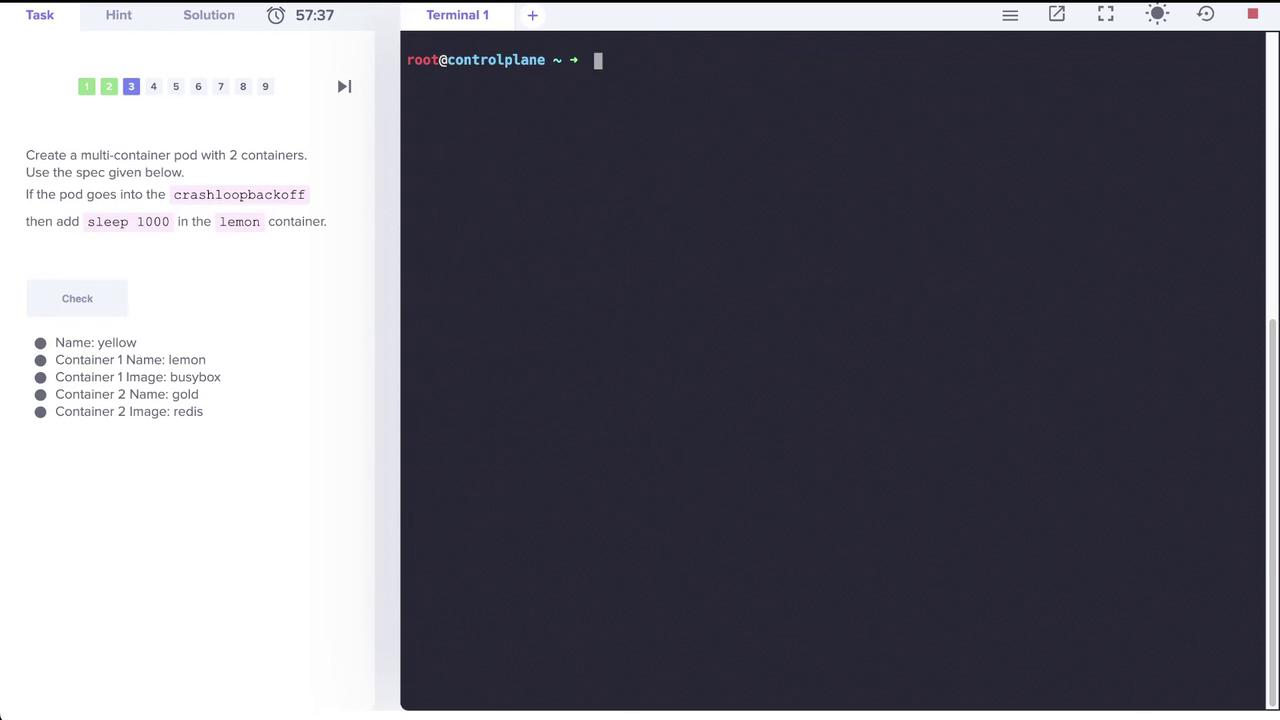
Generating the Pod Manifest
First, generate a YAML manifest for a pod with a single container using a dry-run command:
k run yellow --image=busybox --dry-run=client -o yaml > yellow.yaml
The generated YAML will resemble:
apiVersion: v1
kind: Pod
metadata:
creationTimestamp: null
labels:
run: yellow
name: yellow
spec:
containers:
- image: busybox
name: yellow
resources: {}
dnsPolicy: ClusterFirst
restartPolicy: Always
status: {}
Editing the Manifest
Modify the YAML file to change the first container's name from yellow to lemon, add the sleep command, and include a second container named gold with the Redis image:
apiVersion: v1
kind: Pod
metadata:
creationTimestamp: null
labels:
run: yellow
name: yellow
spec:
containers:
- image: busybox
name: lemon
resources: {}
command: ["sleep", "1000"]
- image: redis
name: gold
dnsPolicy: ClusterFirst
restartPolicy: Always
status: {}
Apply the manifest to create the pod. After the pod is created, verify that it contains two containers: one running BusyBox (with the specified sleep command) and the other running Redis.
Verification Tip
After deploying the pod, use kubectl get pods and kubectl describe pod yellow to ensure that both containers are correctly configured and running.
Setting Up a Simple Logging Application
Next, we will set up a logging application within the elastic-stack namespace. This setup is composed of the following components:
- Application Pod (app): Simulates events and outputs logs.
- Elasticsearch Pod: Stores logs.
- Kibana Pod: Visualizes the logs.
First, list all pods in the elastic-stack namespace:
k get pods -n elastic-stack
The expected output is:
NAME READY STATUS RESTARTS AGE
app 1/1 Running 0 5m31s
elastic-search 1/1 Running 0 5m31s
kibana 1/1 Running 0 5m30s
Inspecting the Application Pod
Review the details of the application pod to determine where logs are stored. The pod uses the kodekloud/event-simulator image, and its logs are written to a file (for example, /log/app.log). To inspect the pod, run:
kubectl describe pod app -n elastic-stack
You can also view the logs directly by using:
kubectl logs app -n elastic-stack
Within these logs, search for entries indicating login issues, such as:
[2022-04-17 18:21:58,698] WARNING in event-simulator: USER5 Failed to Login as the account is locked due to MANY FAILED ATTEMPTS.
This indicates that USER5 is experiencing login problems.
To further confirm the logs stored on disk within the pod, execute:
kubectl -n elastic-stack exec -it app -- cat /log/app.log
Adding a Sidecar Container for Log Shipping
To enable log shipping to Elasticsearch, update the app pod to include a sidecar container. This sidecar, named sidecar, uses a custom Filebeat image (kodekloud/filebeat-configured) and shares the same log volume as the application container.
An image illustrating the pod configuration with the Filebeat sidecar is shown below:

Editing the Pod for a Sidecar
Edit the pod manifest in the elastic-stack namespace:
kubectl edit pod app -n elastic-stack
Then update the YAML to include the sidecar container. Ensure that the volume mounts for logging refer to the same volume:
apiVersion: v1
kind: Pod
metadata:
name: app
namespace: elastic-stack
labels:
name: app
spec:
containers:
- name: sidecar
image: kodekloud/filebeat-configured
volumeMounts:
- mountPath: /var/log/event-simulator/
name: log-volume
- name: app
image: kodekloud/event-simulator
imagePullPolicy: Always
volumeMounts:
- mountPath: /log
name: log-volume
- mountPath: /var/run/secrets/kubernetes.io/serviceaccount
name: kube-api-access-wnzb6
readOnly: true
dnsPolicy: ClusterFirst
restartPolicy: Always
Important Note
Pod updates do not allow adding or removing containers directly. If you encounter an error during the update (e.g., "pods 'app' is invalid"), save your changes and force a replacement with:
kubectl replace --force -f /tmp/kubectl-edit-3922970489.yaml
This command will delete and recreate the pod using the updated manifest.
Once updated, the pod will have two containers:
- Application Container: Writes logs to
/log. - Filebeat Sidecar: Reads the logs and ships them to Elasticsearch.
Verifying Logs in Kibana
After applying the changes, verify that logs are being shipped to and visualized in Kibana. Follow these steps:
- Open the Kibana UI.
- When prompted, create an index pattern (e.g.,
filebeat-*or as instructed in your lab). - Set the time filter field name if required.
- Click "Start" or "Create" to finalize the index pattern.
The screenshot below shows the index pattern creation interface:
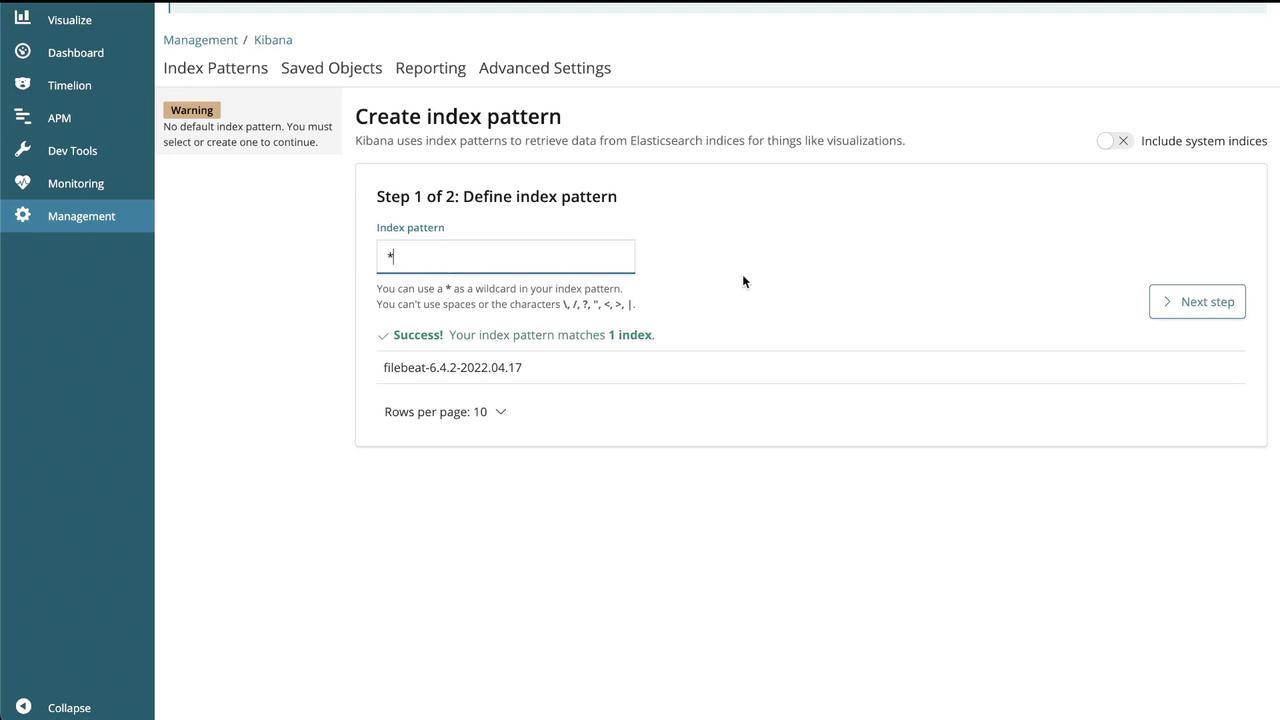
Then, navigate to the "Discover" section to view the logs:
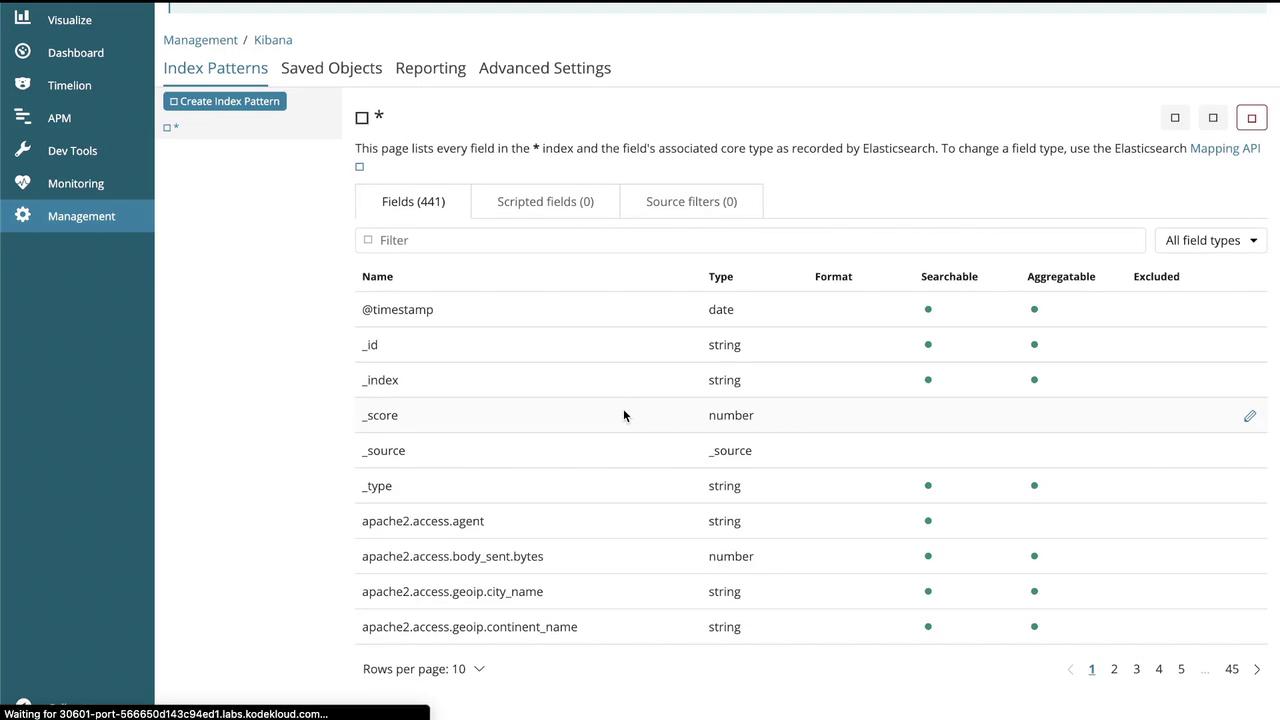
Additional dashboards will highlight:
- Log entries with timestamps and corresponding messages.
- Detailed event information, including user actions, warnings, and order failures.
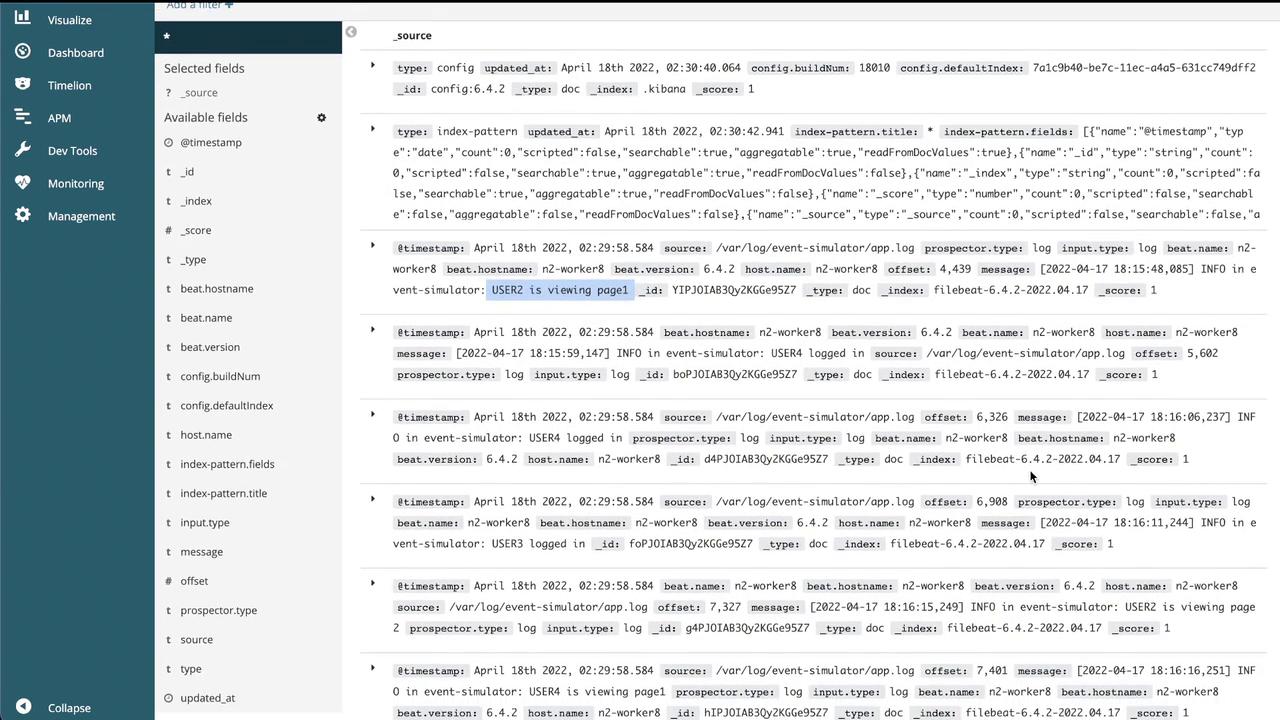
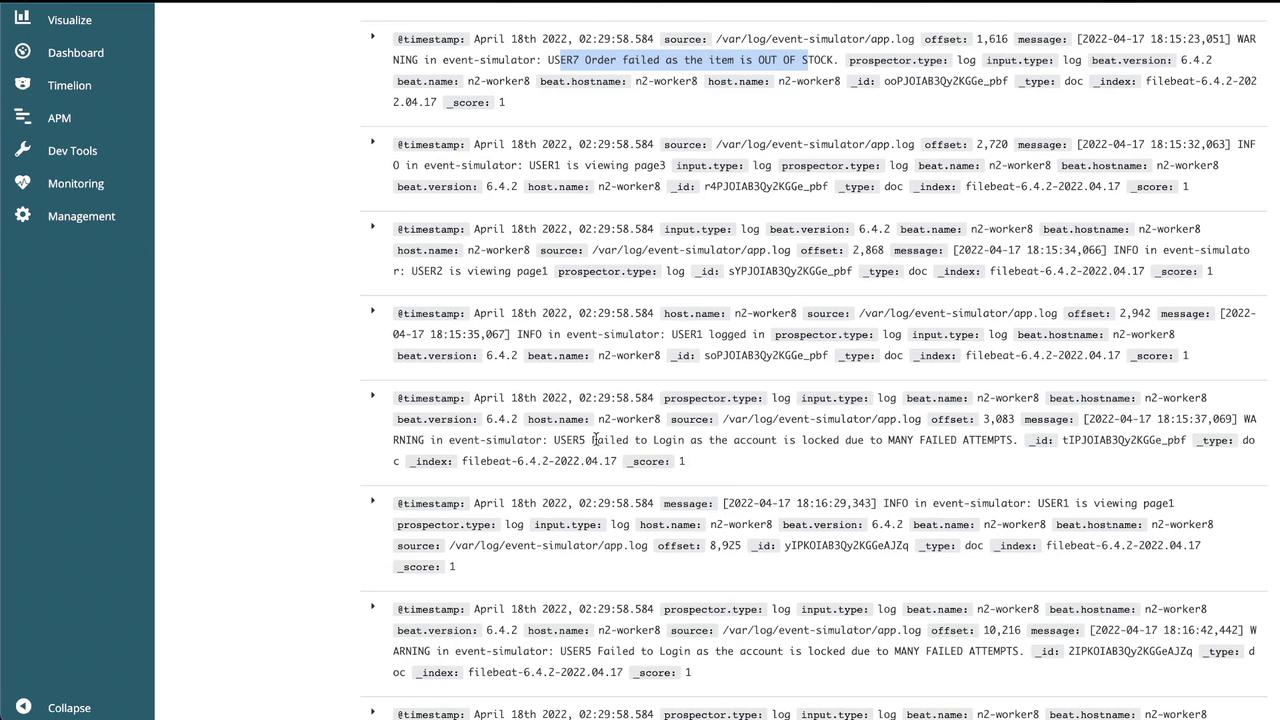
With these steps completed, logs from the application are successfully forwarded to Elasticsearch and visualized in Kibana. This configuration can be extended to scale across multiple pods or deployments within your Kubernetes environment.
That concludes our guide on multi-container pods and log shipping in Kubernetes. Happy learning!
For further information, consider visiting the following resources:
Watch Video
Watch video content